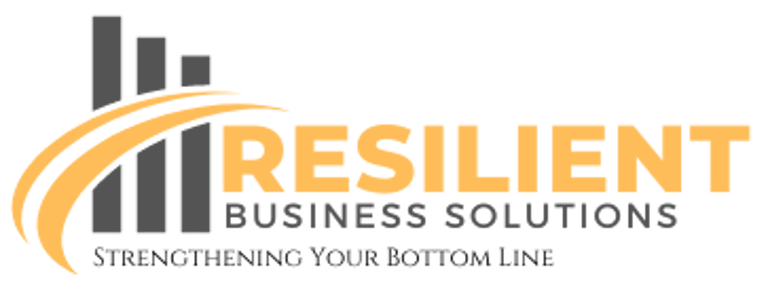Small Business Financial Optimization: Steps for Better Cash Flow and Profitability
Discover how to optimize your small business's financial processes by starting with a thorough assessment of your current financial status. This post guides you through essential steps like analyzing financial statements, streamlining invoicing and payments, and implementing cost control and revenue growth strategies to improve cash flow and profitability.
5 min read


Optimizing your small business's financial processes is crucial for achieving sustained cash flow and profitability. Whether you're looking to tighten your grip on expenses or boost revenue, the foundation of financial success begins with a thorough understanding of your current financial status. Before diving into strategies and tactics, it's essential to take a step back and assess where your business stands financially. This comprehensive assessment allows you to identify areas of strength and weakness, enabling you to make informed decisions that drive growth and ensure long-term financial stability.
Assess and Analyze Current Financial Status
The cornerstone of optimizing financial processes for improved cash flow and profitability starts with a comprehensive assessment and analysis of your current financial status. A meticulous review of your financial statements—encompassing the balance sheet, income statement, and cash flow statement—is essential. This review allows you to understand your business's financial condition, presenting a clear snapshot of assets, liabilities, revenues, and expenses.
An in-depth analysis of your existing cash flow patterns is equally critical. Identifying how and when money moves in and out of your business helps in pinpointing potential cash leakages. By scrutinizing these movements, you ensure you're not overlooking any expenditures that can be minimized or eliminated.
Another integral component of this assessment phase is conducting a SWOT analysis. Evaluating your business’s Strengths, Weaknesses, Opportunities, and Threats provides valuable insights into both internal and external factors that may impact your financial health. Strengths and opportunities can be leveraged to enhance profitability while understanding weaknesses and threats can inform strategic decisions to mitigate risks.
To make the assessment actionable, incorporating financial ratios is indispensable. Liquidity ratios, such as the current ratio and quick ratio, help determine your ability to meet short-term obligations. Profitability ratios, including the net profit margin and return on assets, provide a measure of your business’s efficiency in generating profit. Furthermore, leverage ratios, like the debt-to-equity ratio, assist in understanding the balance between using debt and equity to finance your operations.
This thorough financial analysis not only reveals areas necessitating improvement but also lays the groundwork for informed decision-making. Understanding where your business stands from a financial perspective enables the formation of strategic plans aimed at enhancing cash flow and overall profitability. Employing these assessment tools ensures you are prepared to navigate the complexities of financial optimization.
Streamline Invoicing and Payments Processes
In the realm of small business financial optimization, streamlining your invoicing and payment processes is a crucial step. Improving these processes not only accelerates cash flow but also curtails delays and uncertainties that can hamper profitability. A fundamental starting point is to establish clear and concise payment terms and policies. By setting precise due dates and detailing penalties for late payments, you communicate expectations effectively, reducing misunderstandings and ensuring prompt payment from clients.
Utilizing invoicing software to automate billing is another significant measure. Such tools allow for the timely issuance of invoices, minimizing manual errors and administrative burdens. Automation ensures that invoices are sent out promptly, directly influencing a smoother cash inflow. Keep in mind that following up on unpaid invoices is equally essential. Utilize software to set up automatic reminders for overdue payments, and maintain a systematic approach to follow-ups to enhance collection efficiency.
Offering multiple payment options is a strategy that can expedite the payment process. By enabling clients to pay via various channels—such as credit cards, bank transfers, or digital wallets—you accommodate their preferences, thereby facilitating swifter payments. It’s also advantageous to monitor the status of invoices regularly, ensuring that any discrepancies or issues are resolved swiftly.
On the flip side, managing outgoing payments is equally important. Effective cash flow management extends to negotiating better payment terms with suppliers. Endeavor to secure agreements that permit longer payment periods or staggered payments without incurring penalties. This provides your business with greater flexibility and better alignment between incoming and outgoing cash flows.
In essence, optimizing invoicing and payment processes is about constructing a reliable, efficient framework that supports continuous financial health. By instituting clear policies, leveraging automation, maintaining consistent follow-ups, offering flexible payment options, and negotiating advantageous terms with suppliers, small businesses can enhance their cash flow and profitability sustainably.
Implement Cost Control and Revenue Growth Strategies
A crucial aspect of financial optimization for small businesses is the implementation of cost control and revenue growth strategies. Effective cost management begins with identifying and eliminating unnecessary expenses. Conduct a thorough review of operational costs, pinpoint areas where spending can be minimized, and negotiate better terms with suppliers. Streamlining processes and improving operational efficiency can also result in significant cost savings. Adopting lean management principles and automating routine tasks can reduce overheads and free up resources.
Implementing budgeting and forecasting tools is essential for keeping expenses in check and controlling variances. These tools enable business owners to plan for future financial needs, allocate resources effectively, and monitor financial performance in real time. By setting budgetary limits and tracking expenditures against these limits, businesses can avoid overspending and ensure that funds are used efficiently.
To enhance revenue, businesses should explore new revenue streams and find opportunities to upsell or cross-sell to existing customers. Diversifying the product or service offerings can attract a broader customer base and increase sales. Upselling or cross-selling involves providing customers with related or upgraded products and services, thereby increasing the overall transaction value. Additionally, adapting pricing strategies based on market conditions and competitor analysis can help maximize profitability. Regularly reviewing pricing models ensures that the business remains competitive and that prices reflect the value provided to customers.
Investing in marketing and sales initiatives that yield high returns is another vital component. Identifying and targeting high-potential customer segments through digital marketing, social media campaigns, and personalized outreach can drive significant revenue growth. Utilizing data analytics to measure the effectiveness of marketing efforts and adjust strategies accordingly ensures optimal use of marketing budgets.
Leveraging technology to reduce costs and increase productivity is also essential. Implementing software solutions for inventory management, customer relationship management (CRM), and accounting can streamline operations and enhance efficiency. Cloud-based platforms provide scalable options that can grow with the business while reducing the need for substantial upfront investments in IT infrastructure.
Finally, it is important to continuously review and adjust these strategies based on performance metrics and market conditions. Regular financial analysis and performance reviews help identify areas for improvement and ensure that the business remains agile and responsive to changes in the market.
By starting with a detailed assessment of your current financial status, you lay the groundwork for effective financial optimization. Understanding your financial health allows you to implement targeted strategies for improving cash flow, controlling costs, and driving revenue growth. From streamlining invoicing and payments to leveraging technology and adjusting pricing models, these efforts work together to enhance your business’s financial performance. Continuous monitoring and adjustment of these strategies will keep your business agile and responsive, ensuring you remain on the path to sustained profitability and success.
When You Are Ready
Ready to simplify your business operations? At Resilient Business Solutions, we’re here to take the stress out of so many of your business tasks, so you can focus on what you do best — growing your business. Whether you need help with bookkeeping, invoicing, managing payables and receivables, content creation, or a new website design, we’ve got you covered. Contact us today to learn how we can support your business with reliable, expert services. Let’s build a resilient future together!
Strengthening Your Bottom Line
Customized financial support to empower your business success.
Get Our Free 50+ Page Small Business Success Guide Now
© 2024. All rights reserved.
